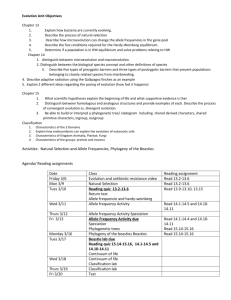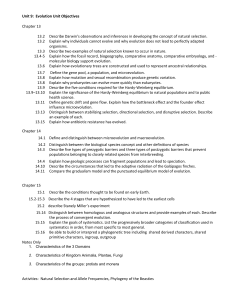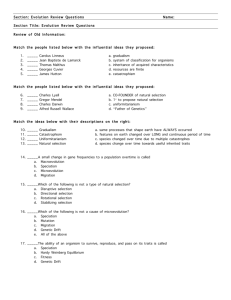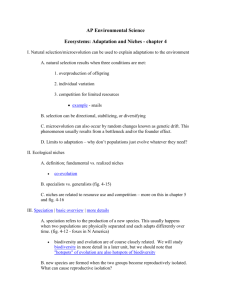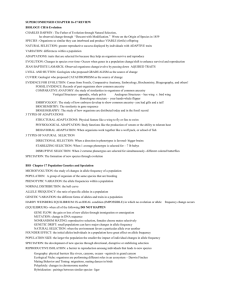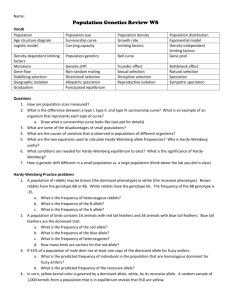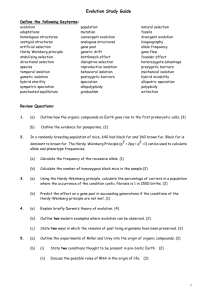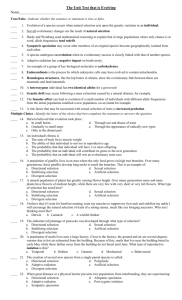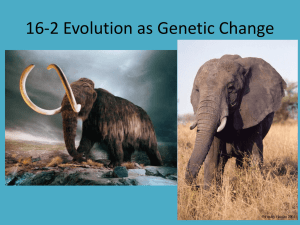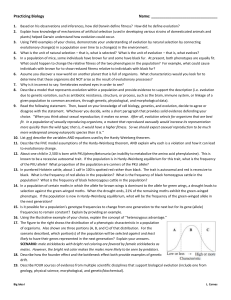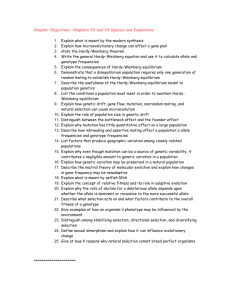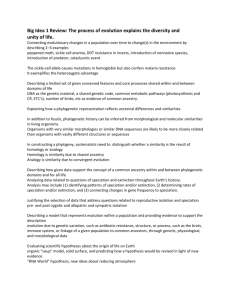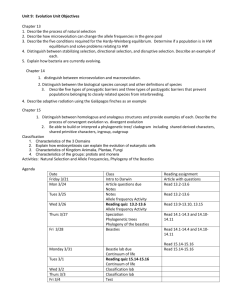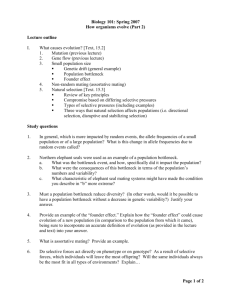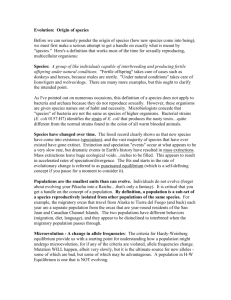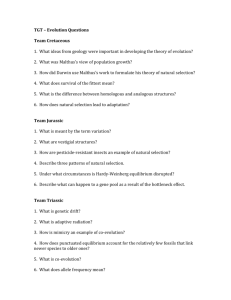whichofthefollowingdescribesapopulation
advertisement
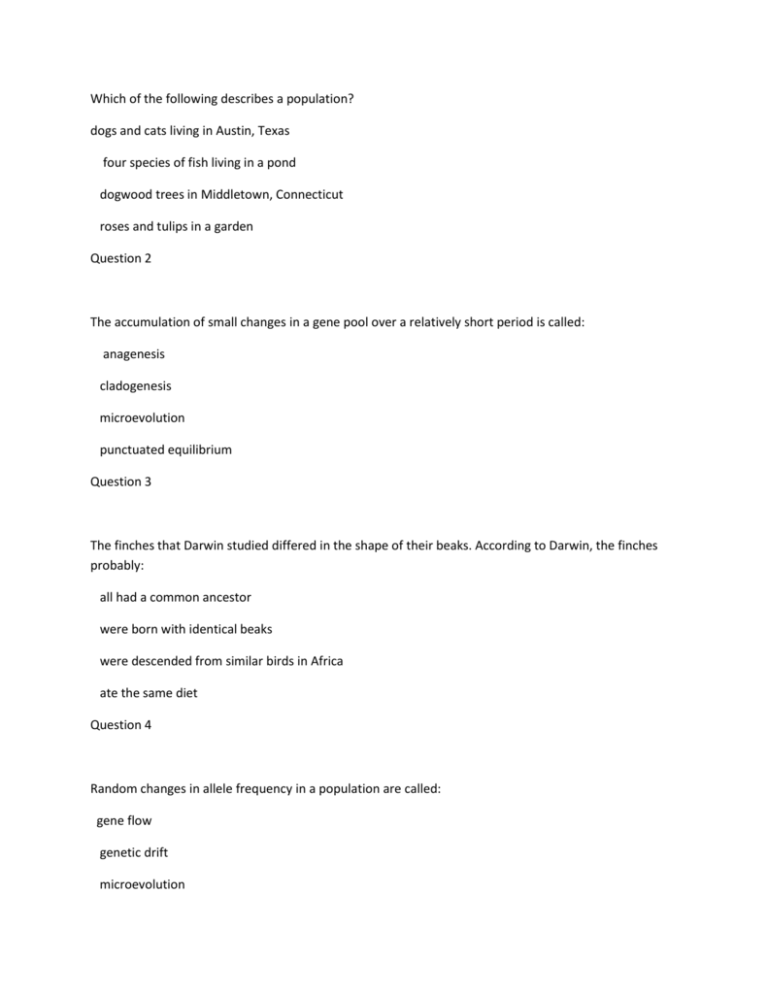
Which of the following describes a population? dogs and cats living in Austin, Texas four species of fish living in a pond dogwood trees in Middletown, Connecticut roses and tulips in a garden Question 2 The accumulation of small changes in a gene pool over a relatively short period is called: anagenesis cladogenesis microevolution punctuated equilibrium Question 3 The finches that Darwin studied differed in the shape of their beaks. According to Darwin, the finches probably: all had a common ancestor were born with identical beaks were descended from similar birds in Africa ate the same diet Question 4 Random changes in allele frequency in a population are called: gene flow genetic drift microevolution stabilizing selection Question 5 New species form: when subspecies diverge more and more because of natural selection when members of the same species become adapted to new environments all of the above Question 6 The hypothesis that evolution occurs at an irregular rate through geologic time is known as: directional evolution directional equilibrium punctuated equilibrium punctuated evolution Question 7 The correct equation for the Hardy-Weinberg principle is: p2 + pq + q2 = 1 p2 + 2pq + q2 = 1 p + 2pq + q = 1 p + pq + q = 1 Question 8 According to the Hardy-Weinberg principle, the p stands for: the most common allele the recessive allele the dominant allele the least-favored allele Question 9 Mutations occur because of: errors in DNA replication exposure to radiation exposure to chemicals all of these Question 10 The tendency of individuals to mate with those that have the same phenotype is called: assortative mating random mating genetic drift bottleneck Question 11 Which of the following would be most likely to decrease genetic variability? bottleneck genetic drift mutation random mating Question 12 The resistance of many bacterial species to antibiotics is an example of: stabilizing selection directional selection disruptive selection extreme selection Question 13 A drastic short-term reduction of population size caused by natural disasters, disease, or predators is called: gene flow founder effect microevolution bottleneck effect Question 14 The traditional, Darwinian view of evolution was that of: slow, gradual change over long periods of time moderate changes over long periods of time fast, rapid changes in a short amount of time species do not change Question 15 Which of the following are types or patterns of natural selection? disruptive selection directional selection stabilizing selection all of these Question 16 Speciation that results from the formation of a geographic feature that isolates some members of a population from other members is an example of: allopatric speciation directed speciation stabilizing speciation sympatric speciation Question 17 The Hardy-Weinberg principle states that allele frequencies in a gene pool remain in equilibrium as long as natural selection is occurring. True False .

